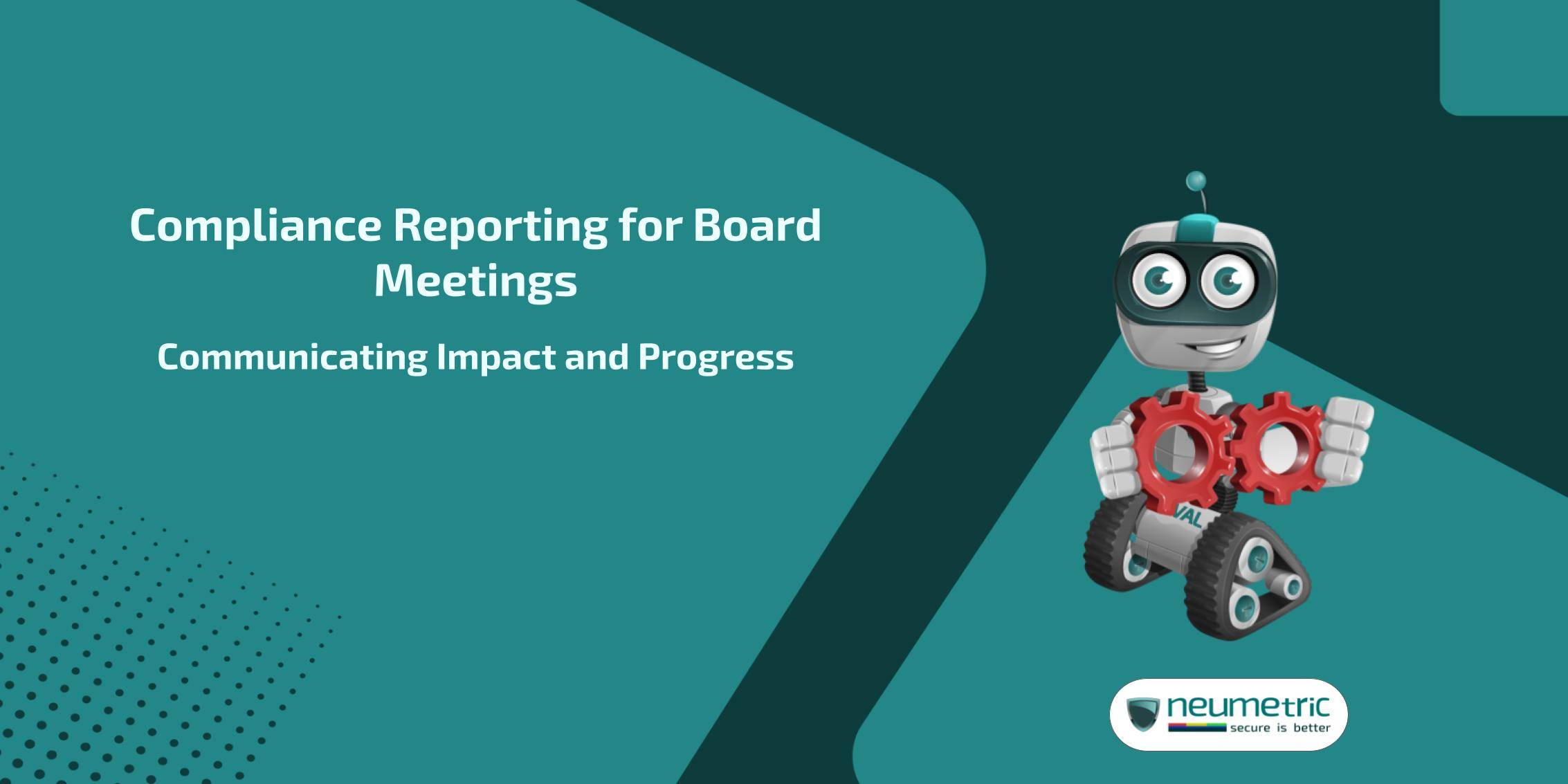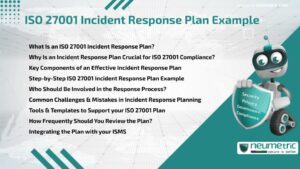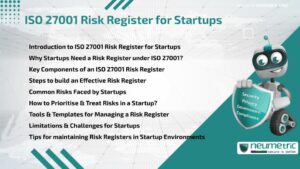Table of Contents
ToggleCompliance Reporting for Board Meetings: Communicating Impact and Progress
Introduction
Compliance reporting forms the backbone of regulatory adherence within organizations. It involves the systematic collection, analysis & presentation of data pertaining to various regulatory requirements, internal policies & industry standards. Through compliance reporting, organizations are able to demonstrate their commitment to operating ethically and within legal boundaries. This includes documenting activities such as risk assessments, policy adherence & remediation efforts to ensure alignment with regulatory expectations.
In today’s interconnected business environment, the importance of effectively communicating the impact and progress of compliance efforts cannot be overstated. Transparent communication regarding compliance initiatives helps to instill trust among stakeholders, including investors, customers & regulatory bodies. By showcasing the tangible outcomes and ongoing progress through compliance reporting, organizations can strengthen their reputation, mitigate risks & demonstrate a commitment to ethical business practices.
Understanding Compliance Reporting for Board Meetings
Compliance reporting is the process of systematically documenting an organization’s adherence to regulatory requirements, internal policies & industry standards. It involves the collection, analysis & presentation of data related to various aspects of compliance, including financial regulations, environmental standards, data privacy laws & ethical guidelines.
The primary purpose of compliance reporting is to provide transparency and accountability, both internally within the organization and externally to stakeholders such as investors, regulatory agencies & the public. By accurately reporting on compliance activities, organizations can identify areas of risk, demonstrate legal and ethical conduct & maintain trust with stakeholders.
Key Components and Regulatory Frameworks
Compliance reporting typically encompasses several key components, including:
- Policy Documentation: Clearly defined policies and procedures that outline the organization’s commitment to compliance.
- Risk Assessments: Evaluation of potential risks and vulnerabilities that could impact compliance efforts.
- Monitoring and Control Activities: Ongoing monitoring of compliance activities and implementation of control measures to mitigate risks.
- Audit and Assurance Processes: Independent assessments to ensure compliance with regulatory requirements and internal policies.
- Reporting and Communication: Regular reporting to stakeholders, including board members, executives, regulators & shareholders, to communicate compliance status, progress & any issues or incidents.
Regulatory frameworks provide guidelines and standards that organizations must adhere to in their compliance reporting efforts. These frameworks vary depending on the industry and jurisdiction but often include regulations such as Sarbanes-Oxley Act [SOX], General Data Protection Regulation [GDPR], Health Insurance Portability and Accountability Act [HIPAA] & International Financial Reporting Standards [IFRS]. Compliance reporting must align with these frameworks to ensure legal and regulatory compliance.
Role in Board Meetings
Compliance reporting plays a crucial role in fulfilling the oversight responsibilities of the board of directors. Board members are entrusted with the duty of overseeing the management and operations of the organization, including its compliance with laws, regulations & internal policies. Through compliance reporting, board members gain insights into the organization’s adherence to regulatory requirements and can assess the effectiveness of compliance programs and controls. This oversight helps to mitigate legal and reputational risks, safeguarding the interests of stakeholders and promoting the long-term sustainability of the organization.
Link to Corporate Governance
Compliance reporting serves as a linchpin in the broader framework of corporate governance. Corporate governance refers to the system of rules, practices & processes by which a company is directed and controlled. Effective corporate governance ensures accountability, fairness & transparency in decision-making, thereby safeguarding the interests of shareholders and other stakeholders. Compliance reporting provides the board of directors with the necessary information to fulfill their governance responsibilities, including monitoring management’s actions, evaluating performance & making strategic decisions in the best interests of the organization and its stakeholders.
Accountability and Transparency
Accountability and transparency are foundational principles of good governance and are closely tied to compliance reporting. By regularly reporting on compliance activities, organizations demonstrate their commitment to accountability by being open and transparent about their actions and outcomes. Compliance reporting allows board members to hold management accountable for compliance failures and to ensure corrective actions are taken to address deficiencies. Moreover, transparency in compliance reporting fosters trust among stakeholders, including investors, regulators, employees & the public, enhancing the organization’s reputation and credibility in the marketplace.
Challenges
Data Accuracy
Ensuring the accuracy of data used in compliance reporting poses a significant challenge for organizations. Compliance reporting relies heavily on data from various sources, including internal systems, third-party vendors & regulatory agencies. However, discrepancies, inconsistencies & errors in data collection, storage & analysis can compromise the integrity of compliance reports. Factors such as manual data entry, siloed systems & inadequate data governance practices can contribute to inaccuracies in compliance reporting, leading to potential compliance violations, regulatory penalties & reputational damage. Organizations must implement robust data management processes, quality controls & technology solutions to improve data accuracy and reliability in compliance reporting efforts.
Regulatory Complexity
The ever-evolving regulatory landscape presents another significant challenge for compliance reporting. Regulatory requirements are constantly changing and becoming more complex, with new laws, regulations & standards being introduced at local, national & international levels. Organizations operating across multiple jurisdictions or within highly regulated industries face the daunting task of navigating a maze of regulatory requirements and ensuring compliance with numerous overlapping and sometimes conflicting regulations. The complexity of regulatory compliance can overwhelm organizations, leading to compliance gaps, compliance fatigue & increased compliance costs. To address this challenge, organizations must stay abreast of regulatory developments, conduct regular compliance assessments & implement agile compliance strategies that can adapt to changing regulatory requirements effectively.
Meeting Stakeholder Expectations
Meeting the diverse expectations of stakeholders presents a multifaceted challenge for compliance reporting. Stakeholders, including investors, regulators, customers, employees & the public, have varying interests, priorities & information needs regarding compliance performance and outcomes. Failure to meet stakeholders’ expectations for transparency, accuracy, timeliness & relevance in compliance reporting can erode trust, damage reputation & undermine stakeholder confidence in the organization. Balancing the needs and demands of different stakeholder groups while ensuring compliance reporting remains comprehensive, concise & actionable requires careful consideration and strategic communication efforts. Organizations must engage with stakeholders proactively, solicit feedback & tailor compliance reporting to address stakeholders’ concerns and interests effectively.
Strategies
Clear Presentation
Clear presentation is essential for effective compliance reporting, as it enhances understanding, engagement & decision-making among stakeholders, particularly board members. Complex regulatory requirements and technical details can often obscure key compliance insights and detract from the overall message. Therefore, compliance reports should be structured in a clear, concise & user-friendly manner, utilizing plain language, visual aids & executive summaries to highlight key findings, trends & implications. Organizing information logically, using charts, graphs & tables to visualize data & providing context and explanations where necessary can help board members grasp the significance of compliance issues and make informed decisions more efficiently.
Technology and Automation
Technology and automation play a pivotal role in streamlining compliance reporting processes and enhancing efficiency, accuracy & scalability. Manual compliance reporting processes are time-consuming, error-prone & resource-intensive, often involving manual data entry, spreadsheet-based tracking & ad hoc reporting. By leveraging technology solutions such as compliance management software, data analytics tools & reporting dashboards, organizations can automate data collection, analysis & reporting tasks, reducing the burden on compliance teams and improving the accuracy and timeliness of compliance reporting. Advanced analytics capabilities, including predictive modeling and machine learning [ML] algorithms, can also help organizations identify emerging compliance risks, trends & opportunities proactively.
Tailoring to Board Needs
Tailoring compliance reporting to meet the specific needs and preferences of board members is critical for ensuring relevance, engagement & effectiveness. Board members have unique backgrounds, expertise & priorities & may require different levels of detail, frequency of reporting & formats of presentation to fulfill their oversight responsibilities effectively. Therefore, compliance reports should be customized to align with the board’s strategic objectives, risk appetite & decision-making processes. Engaging with board members regularly to understand their expectations, soliciting feedback on existing reporting practices & adapting reporting formats and content accordingly can help enhance board engagement and support more informed decision-making regarding compliance issues.
Communicating Impact
Highlighting Achievements
One crucial aspect of effective compliance reporting is highlighting achievements attained by the organization in meeting compliance objectives. Celebrating successes not only recognizes the efforts of individuals and teams but also reinforces a culture of compliance within the organization. By showcasing achievements, such as meeting regulatory deadlines, implementing effective controls or achieving certification, compliance reports can demonstrate tangible progress and instill confidence among stakeholders in the organization’s ability to manage compliance effectively. Highlighting achievements also serves as a motivator for continuous improvement and encourages a proactive approach to compliance management.
Identifying Improvement Areas
While it’s essential to celebrate achievements, compliance reporting should also identify areas where improvements are needed to strengthen compliance programs and mitigate risks effectively. Identifying improvement areas involves acknowledging shortcomings, gaps or deficiencies in current compliance practices and processes. This could include instances of non-compliance, internal control weaknesses or areas where regulatory requirements are not adequately addressed. By candidly addressing improvement areas in compliance reports, organizations demonstrate a commitment to self-assessment, learning & continuous improvement. Moreover, identifying improvement areas provides a roadmap for remediation efforts and helps prioritize resource allocation to address the most critical compliance challenges.
Aligning with Goals
Effective compliance reporting goes beyond mere regulatory compliance and aligns with broader organizational goals and objectives. By aligning compliance efforts with strategic goals, compliance reports can demonstrate how compliance activities contribute to the organization’s overall mission, vision & values. This involves articulating the linkages between compliance initiatives and business objectives, such as enhancing operational efficiency, mitigating financial risks or improving customer satisfaction. Aligning compliance reporting with goals also helps garner support and buy-in from senior leadership and board members, who can see the tangible value that compliance brings to the organization’s success. Additionally, it fosters a culture of accountability and ownership, where compliance becomes everyone’s responsibility, not just a checkbox exercise.
Best Practices
Engaging Visuals
Incorporating engaging visuals into compliance reporting enhances comprehension and retention of key information among board members and other stakeholders. Visual elements such as charts, graphs, infographics & diagrams can help distill complex data and trends into digestible and visually appealing formats. Visuals not only capture attention but also facilitate quick understanding of compliance performance, trends & outliers. When using visuals in compliance reporting, it’s essential to choose appropriate formats that align with the audience’s preferences and the information being conveyed. Additionally, maintaining consistency in design and layout helps create a cohesive and professional presentation that enhances the overall impact of compliance reports.
Contextual Analysis
Providing contextual analysis is critical for adding depth and meaning to compliance reporting. Contextual analysis involves interpreting compliance data in the broader context of organizational goals, industry trends, regulatory developments & risk factors. Rather than presenting raw data in isolation, compliance reports should offer insights, interpretations & explanations that help board members understand the significance of compliance issues and their implications for the organization. Contextual analysis helps board members make informed decisions by connecting compliance performance to strategic priorities, identifying emerging risks and opportunities & assessing the effectiveness of current compliance strategies and controls.
Facilitated Discussions
Facilitated discussions are an essential component of effective compliance reporting, as they encourage active engagement, collaboration & dialogue among board members and other stakeholders. Instead of presenting compliance reports as static documents to be passively reviewed, organizations should facilitate interactive discussions that encourage questions, feedback & debate. Facilitated discussions provide an opportunity for board members to ask clarifying questions, share perspectives & provide insights based on their expertise and experience. By fostering a culture of open communication and constructive dialogue, facilitated discussions enable board members to gain a deeper understanding of compliance issues, identify areas for improvement & collectively chart the course for enhancing compliance effectiveness.
Conclusion
Compliance reporting is indispensable for organizations in demonstrating adherence to regulatory standards, fostering transparency & maintaining stakeholder trust. It serves as a vital tool for board members and compliance professionals to monitor, assess & communicate compliance efforts effectively.
Continuous improvement is key to ensuring the efficacy of compliance reporting. Organizations must remain vigilant, adapt to evolving regulatory landscapes & strive for excellence in compliance management practices. By embracing a culture of continuous improvement, organizations can enhance their resilience, agility & effectiveness in meeting compliance obligations.
Effective compliance reporting should provide actionable insights that empower board members and compliance professionals to make informed decisions and drive meaningful change. By synthesizing complex data into clear, actionable recommendations, compliance reports enable stakeholders to identify areas for improvement, allocate resources strategically & mitigate compliance risks proactively. Ultimately, actionable insights derived from compliance reporting support organizational growth, sustainability & long-term success.
Frequently Asked Questions [FAQ]
What are some common challenges organizations face in compliance reporting?
Organizations often encounter challenges such as ensuring data accuracy, navigating regulatory complexity & meeting stakeholder expectations. These challenges can impede the effectiveness of compliance reporting efforts and require careful attention and strategic solutions to overcome.
How can compliance reporting be made more engaging for board members?
Engaging visuals, contextual analysis & facilitated discussions are effective strategies for enhancing board members’ engagement with compliance reporting. By incorporating visual elements, providing meaningful context & fostering interactive dialogue, organizations can make compliance reporting sessions more informative and impactful.
Why is continuous improvement emphasized in compliance reporting?
Continuous improvement is essential in compliance reporting to adapt to changing regulatory requirements, enhance compliance effectiveness & maintain stakeholder trust. By embracing a culture of continuous improvement, organizations can identify areas for enhancement, implement best practices & drive positive outcomes in compliance management.





